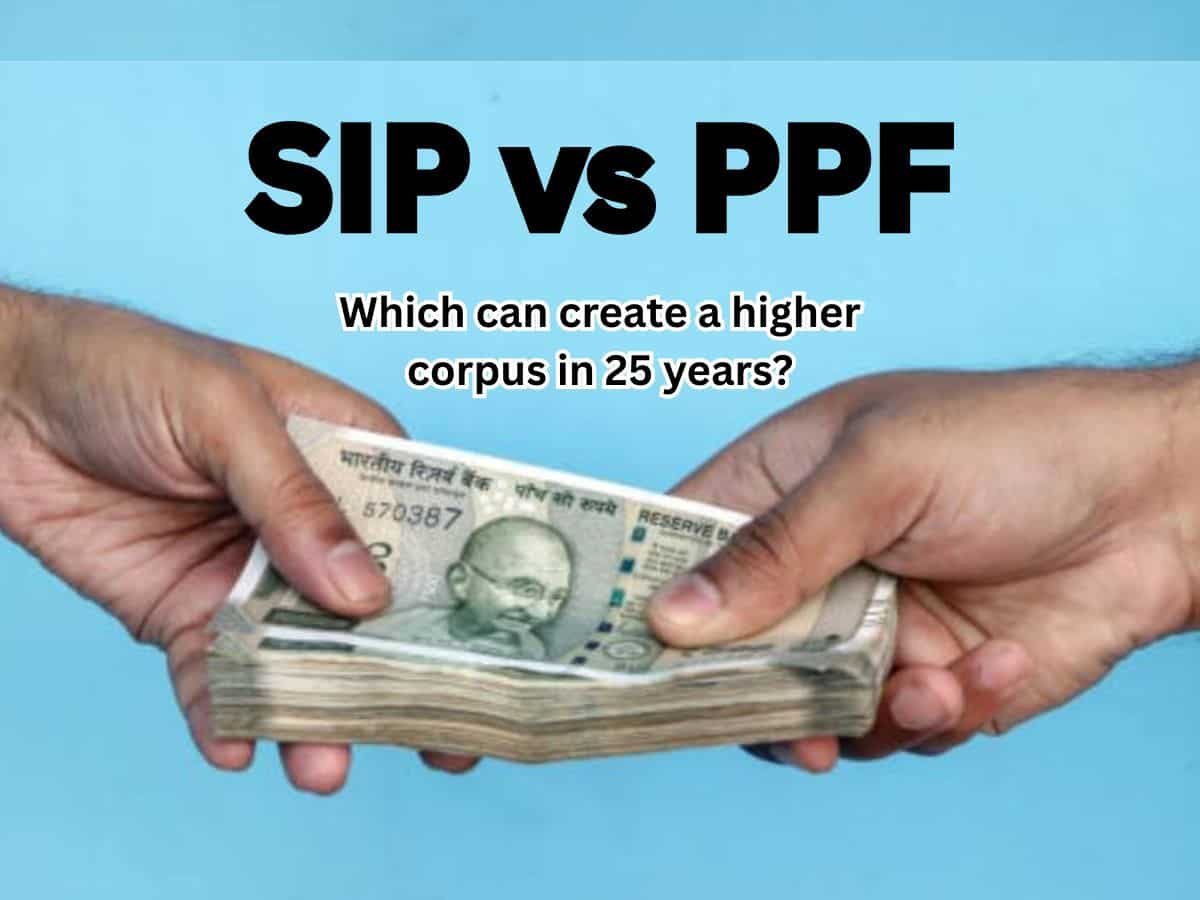Are you confused about investing in PPF or SIP? Let’s simplify it. PPF is a government-backed scheme with guaranteed returns, while SIP is a market-linked investment with potential for high returns but no guarantees. We will compare both by investing Rs 1,20,000 per year for 25 years to see which one gives better results. Let’s find out.
Also read: SIP vs PPF with Rs 1,40,000/year investment: Which can create a larger corpus in 25 years?
What is SIP in a mutual fund?
A Systematic Investment Plan is an investment scheme where you can invest a fixed amount in mutual fund(s). You can go for daily, monthly, quarterly, or yearly investment in a mutual fund scheme.
What do you understand by PPF?
Public Provident Fund is a government-backed scheme that you can also use for portfolio diversification. Deposits up to 1.5 lakh in a year are eligible for tax exemptions under Section 80C of the Income Tax Act.
What is the minimum amount to invest in an SIP?
The minimum amount to invest in an SIP is Rs 100. You can also increase, decrease, or stop their SIP.
What is the minimum and maximum amount to invest in PPF?
The minimum deposit in a year is Rs 500, whereas the maximum yearly deposit is Rs 1.5 lakh.
How does SIP work?
A fixed amount is automatically deducted from your bank account and invested in mutual funds. These investments happen regularly, and you get units based on the fund’s value (NAV).
How does PPF work?
This scheme, run by post offices and banks, offers voluntary contributions to its account holders. Post Office offers a 7.1 per cent interest rate compounded yearly.
PPF calculation conditions
Yearly investment: Rs 1,20,000 (monthly investment Rs 10,000x 12 months)
Period: 25 years
Rate of interest: 7.1 per cent
PPF: What will be your corpus in 25 years with Rs 1,20,000/year investment?
On a Rs 1,20,000/year investment, the retirement corpus in 25 years will be Rs 82,46,412. The estimated total interest during that time will be Rs 52,46,412, and the investment amount will be Rs 30,00,000.
SIP investment conditions
Since there are no fixed returns in SIP investment, we are calculating as per annualised returns of 8 per cent (debt fund), 10 per cent (equity fund), and 12 per cent (hybrid fund). We will do the calculations on a monthly investment of Rs 10,000(1,20,000/12)
SIP: What will you get on Rs 10,000 monthly investment for 25 years (hybrid fund)
At 12 per cent annualised growth, the estimated corpus in 25 years will be Rs 1,70,22,066. During that time, the invested amount will be Rs 30,00,000, and capital gains will be Rs 1,40,22,066.
SIP: What will you get on Rs 10,000 monthly investment for 25 years (equity fund)
At 10 per cent annualised growth, the estimated corpus in 30 years will be Rs 1,24,31,596. The estimated capital gains will be Rs 94,31,596.
SIP: What will you get on Rs 10,000 monthly investment for 25 years (debt fund)
At 8 per cent annualised growth, the estimated corpus in 30 years will be Rs 91,48,394. The estimated capital gains will be Rs 61,48,394.
DISCLAIMER: Not financial advice; invest at your own risk



